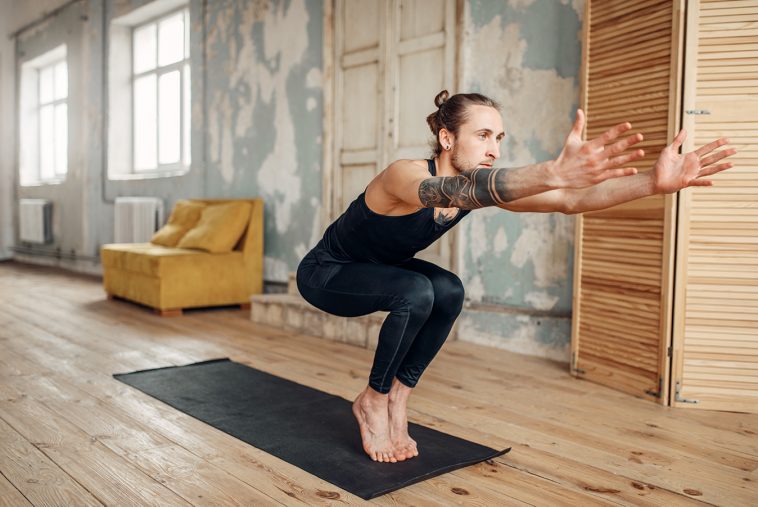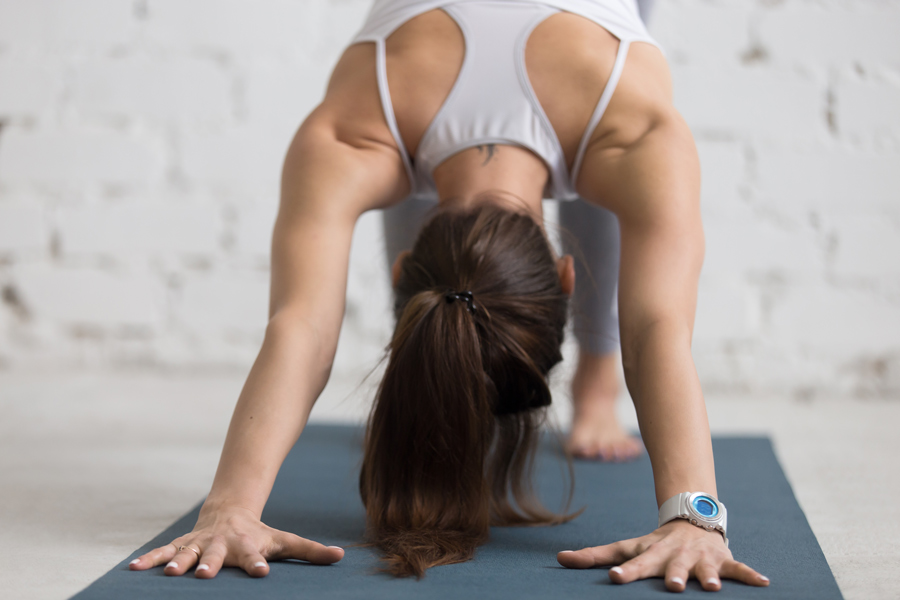The practice of yoga is not only a physical exercise but also a challenge for the mind and spirit.
If we add 40º Celsius to this, we make the challenge much more exigent. This is what Bikram Yoga is about.
- What is and what is not Bikram Yoga?
- What are the asanas?
- Is it for anyone?
- Why do Bikram yoga?
- Tips for before and after practicing Bikram Yoga
What Is and What Is Not Bikram Yoga?
Raising the room temperature for any sequence of asanas is NOT Bikram Yoga.
Unlike the Hot Yoga that is usually a practice of varied sequences in a sauna-like room, Bikram Yoga is a style patented by Bikram Choudhury that consists of a specific sequence of 26 asanas or yoga pose along with breathing exercises or pranayamas and they are performed in a room at an average temperature of 42 degrees Celsius.
The reason for this high temperature is that yoga poses are designed to be performed in India. Where the heat and humidity of the environment stimulate vasodilation and sweating; by emulating these conditions in your practice room, you will get the greatest benefits in each of the asanas.
Each practice of Bikram Yoga is designed to last 90 minutes and during the practice, both the upper and lower body train is exercised and the processes of the digestive, cardiovascular and nervous systems are stimulated to clean them and put them to work at an optimal level.
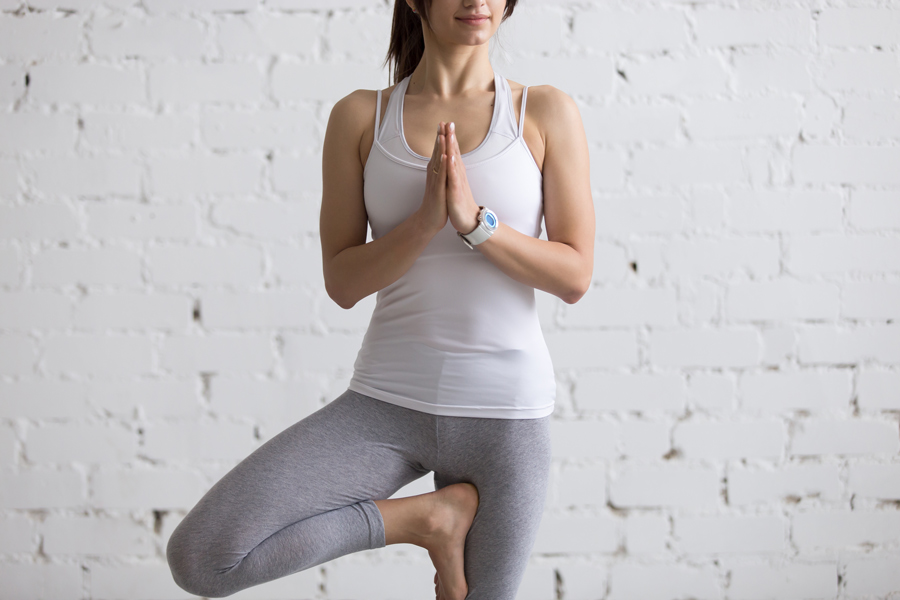
What are The Asanas?
The asanas or yoga postures obey the specific order patented for the practice of Bikram Yoga and is what makes it unique.
The series of 26 positions are as follows:
Breathing:
Pranayama breathing (deep foot breathing).
Standing Poses:
Ardha-Chandrasana with Pada Hastasana (Half Moon Position with hands at feet), Utkatasana (rare position), Garurasana (Eagle position), Dandayamana-Janushirasana (Standing, facing the knee), Dandayamana-Dhanurasana (Bow Position, standing), Tuladandasana (Post Position swaying.), Dandayamana-Bibhaktapada-Paschimotthanasana (Standing, legs apart, stretching), Trikonasana (Triangle Position), Dandayamana-Bibhaktapada-Janushirasana (Standing, legs apart, facing the knee), Tadasana (Tree Position), Padangustasana (Standing on your toes).
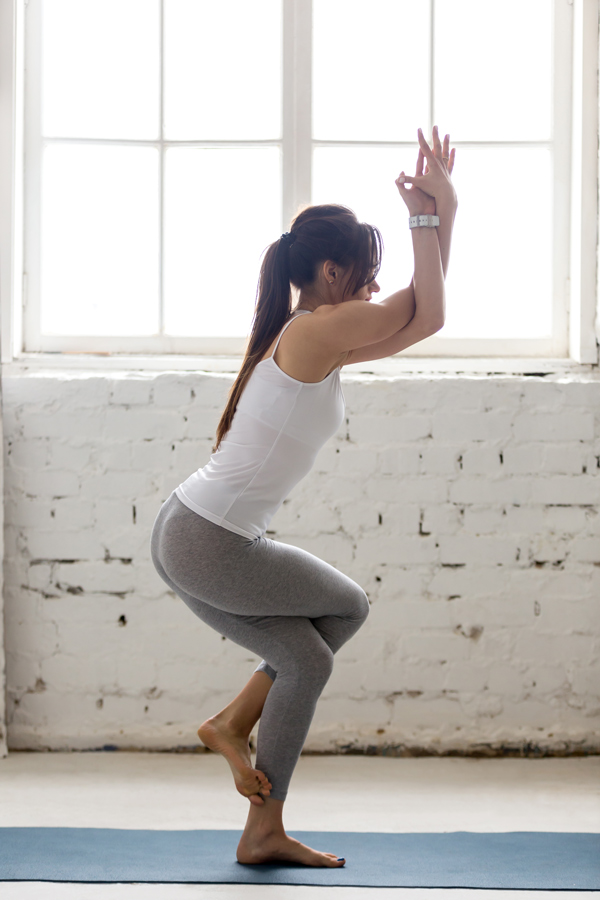
Floor Poses:
Savasana (Dead Body Position), Pavanamuktasana (Wind Removal Position), Bhujangasana (Cobra Position), Salabhasana (Lobster Position), Poorna-Salabhasana (The Complete Lobster), Dhanurasana (Bow Position), Supta-Vajrasana (Fixed and Firm Position), Ardha-Kurmasana (Half Turtle Position), Ustrasana (Camel Position), Sasangasana (Rabbit Position)Janushirasana with Paschimotthanasana (Front of the Knee with Stretch), Ardha-Matsyendrasana (Torsion of the spine).
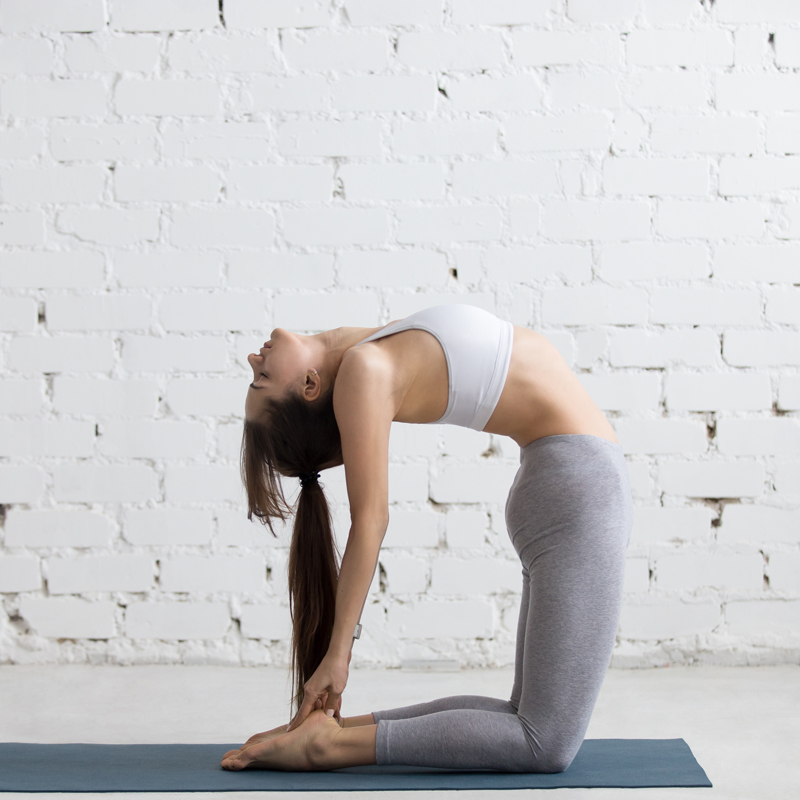
Breathing:
Kapalbhati in Vajrasana (Fire Breathing).
Is it for Anyone?
The practice of Bikram Yoga is intense, not only because of the high temperatures of the room where it is performed but also because of the requirement of its asanas, which is why this practice is restricted to:
- Pregnant women: Especially in the first months of pregnancy as there are several positions where a lot of pressure is exerted on the belly area.
- People with cardiovascular conditions: Since the practice stimulates the cardiovascular system and increases the heart rate, which can be risky for people with heart or cardiovascular system problems.
- Children under 13 years: Since the body’s thermal system does not fully develop until after this age.
- Older adults: depending on their physical condition they can perform the practice of Bikram yoga, however, this group has the highest risk of heatstroke.
- If you have a hangover: Many people tend to perform exercises to “sweat the hangover”, however, it is not advisable to perform Bikram Yoga under these conditions since the body is dehydrated by the metabolism of alcohol and when you sweat profusely you run the risk of becoming completely dehydrated, suffering from nausea and even fainting or decompensation.
Why do Bikram Yoga?
Because of its demanding levels, the practice of Bikram Yoga has multiple benefits that transcend the physical, the main ones being:
- Clean your body: By stimulating sweating with high temperatures and steam, your pores will open by cleaning the skin of impurities that accumulate under its surface, it is like going to the spa while you exercise.
- Increased flexibility: Another benefit of elevated temperature is that all soft parts of the body (muscles, tendons, digestive, respiratory and cardiovascular organs) can stretch more comfortably and with less risk of injury.
- Challange: If you like to set new goals and challenge your mind and body, the practice of Bikram Yoga is definitely for you as it will confront not only the capabilities of your body but also your mind since this extreme environment represents a difficulty for who are not accustomed to exercise under these conditions.
Tips Before and After Bikram Yoga
If you want to start the practice of Bikram Yoga we give you these recommendations so that your experience is as fulfilling as possible:
Before practice:
- Check if you have any of the conditions that could prevent you from practicing Bikram Yoga
- Wear light clothing: Soft fabrics that allow perspiration and do not become heavy with it is ideal for practice
- Hydrate: Ok, you should do this ALL THE TIME, however, it is good to emphasize this practice as you will sweat a lot.
- Do not eat anything during the 2 or 3 hours before class as this is a high-intensity exercise and there may be nausea or vomiting if you are in the process of digestion.
After the practice:
- Hydrate again as you will surely have sweated a lot.
- Eat something light if you feel hungry since your whole body will be very active.
- Follow the instructor’s advice since he will have observed your physical condition during the practice and will probably advise you if you should rest a little more for the recovery of the body, maybe perform some other physical activity.
The most important thing as any yoga practice is to listen to your body and not force it to make perfect poses if you are not prepared for it and especially ENJOY and BE PRESENT.

